Indulge in a gastronomic adventure unlike any other as we embark on a journey through the vibrant flavors and rich culinary heritage of Peru. From the iconic ceviche to the mouthwatering lomo saltado, this South American gem is a paradise for food enthusiasts. In this comprehensive guide, we will delve into the exquisite Peruvian cuisine, uncovering hidden gems and must-try dishes that will leave your taste buds in awe. So, fasten your seatbelts and prepare to tantalize your senses as we navigate through the diverse landscapes and immerse ourselves in the culinary wonders of Peru.
Peruvian Cuisine
When it comes to culinary delights, Peru stands out as a true gem for food lovers. Its rich and diverse cuisine is a reflection of the country’s vibrant history and cultural influences. In this section, we will explore how Peruvian cuisine has been shaped by indigenous ingredients, the Spanish conquest, European influences, and even Asian fusion.
The Influence of Indigenous Ingredients
Peruvian cuisine owes much of its uniqueness to the bountiful indigenous ingredients that have been cultivated in the region for centuries. From quinoa and potatoes to corn and ají peppers, these native ingredients form the foundation of many traditional Peruvian dishes.
One iconic ingredient that deserves special mention is the potato. Peru boasts a dazzling array of potato varieties, each with its own distinct flavor and texture. The indigenous people of Peru have been cultivating this staple crop for over 4,000 years, making it an integral part of their culinary traditions.
The Spanish Conquest and European Influences
The arrival of the Spanish conquistadors in the 16th century marked a significant turning point in Peruvian cuisine. The Spanish brought with them a whole new range of ingredients, including wheat, rice, and various herbs and spices. They also introduced animals such as cattle, pigs, and chickens, which became an important source of protein in Peruvian dishes.
European cooking techniques and recipes were also assimilated into the local cuisine, giving rise to fusion dishes such as “aji de gallina,” a creamy chicken stew flavored with aji amarillo peppers and served over rice. This blending of indigenous and European flavors created a unique culinary identity for Peru.
Asian Fusion
In the late 19th and early 20th centuries, Peru experienced an influx of Chinese and Japanese immigrants. These immigrants brought with them their own culinary traditions and techniques, which eventually merged with Peruvian cuisine to create the phenomenon known as “chifa” and “nikkei.”
Chifa refers to the fusion of Chinese and Peruvian flavors, resulting in dishes like “lomo saltado,” a stir-fry of beef, onions, tomatoes, and soy sauce served with French fries and rice. Nikkei, on the other hand, combines Japanese ingredients and techniques with Peruvian flavors, giving rise to dishes like “tiradito,” a sashimi-style dish served with a spicy Peruvian sauce.
The integration of Asian influences into Peruvian cuisine adds yet another layer of diversity and excitement to the gastronomic landscape of the country.
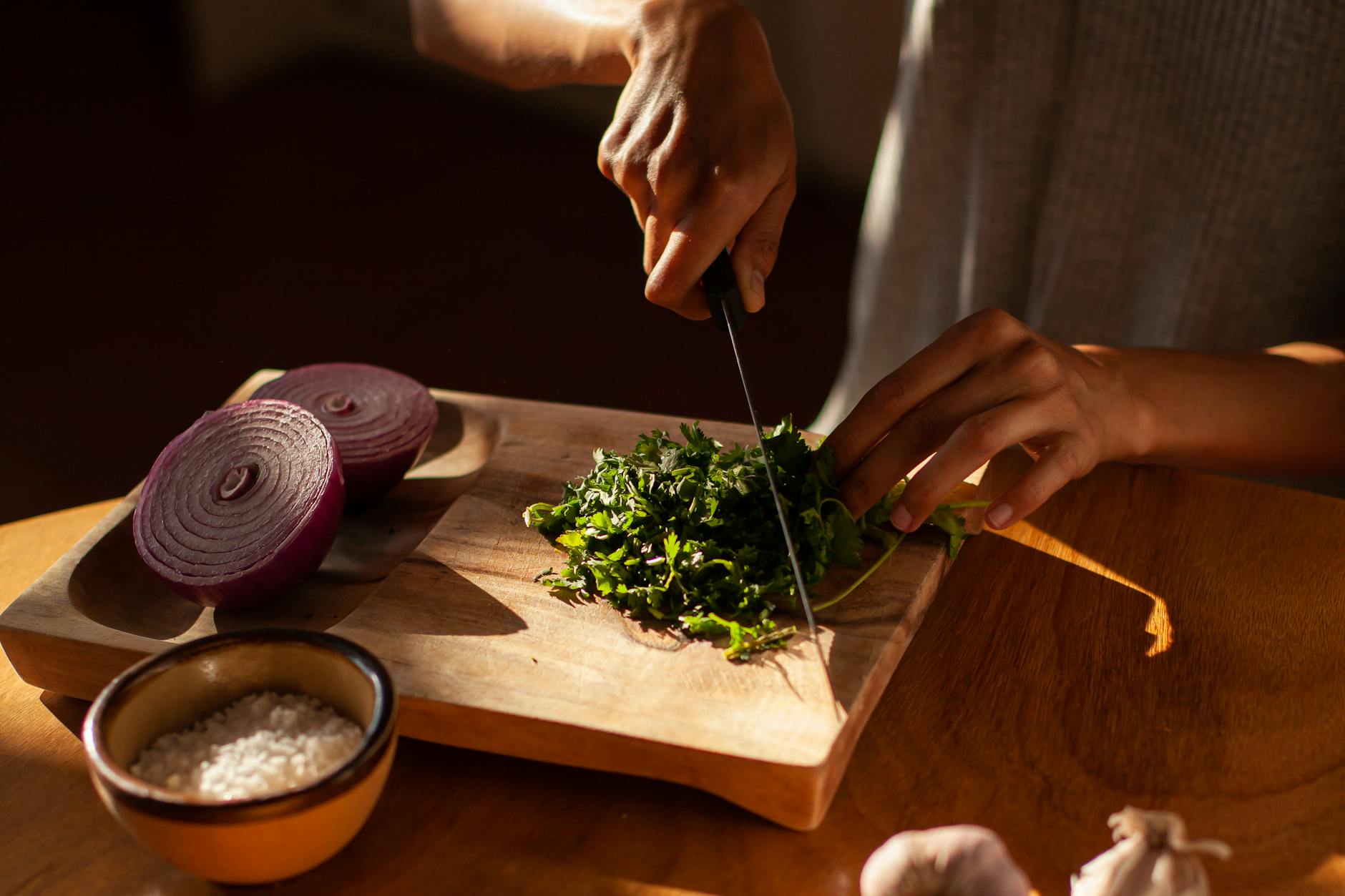 Close-up Photo of a Person Slicing Cilantro (Photo by Los Muertos Crew)
Close-up Photo of a Person Slicing Cilantro (Photo by Los Muertos Crew)
To truly understand the culinary wonders of Peru, one must explore the influence of indigenous ingredients, the impact of the Spanish conquest and European influences, as well as the fusion of Asian flavors. The result is a tantalizing blend of textures, flavors, and aromas that have captivated food lovers around the world. So, embark on a culinary adventure and savor the delights of Peruvian cuisine!
Exploring the Culinary Delights of Peru: A Food Lover’s Guide
Traditional Peruvian Dishes
Peru is renowned for its vibrant and diverse culinary scene, offering a delightful array of traditional dishes that capture the essence of Peruvian culture. From fresh seafood to succulent meats, the country’s cuisine is a testament to its rich history and cultural heritage. In this section, we will explore some of the most iconic traditional Peruvian dishes that every food lover must try.
Ceviche
 Gingerbread Cardboard Decor on White Surface (Photo by Lina Kivaka)
Gingerbread Cardboard Decor on White Surface (Photo by Lina Kivaka)
One cannot talk about Peruvian cuisine without mentioning ceviche. This refreshing dish is a staple in Peruvian coastal regions and has gained popularity worldwide. Ceviche is made with fresh raw fish or seafood that is marinated in lime juice and flavored with onions, chili peppers, and cilantro. The acidity of the lime juice “cooks” the fish, resulting in a tangy and flavorful dish. Ceviche is often served with sweet potato, corn, and cancha, which are roasted corn kernels.
Lomo Saltado
Lomo Saltado is a mouthwatering fusion of Peruvian and Chinese flavors, reflecting the influence of Chinese immigrants on the country’s cuisine. This stir-fry dish features tender strips of beef sautéed with onions, tomatoes, and soy sauce. It is typically served with French fries and a side of white rice. The combination of tender beef, crispy fries, and savory sauce creates a delectable symphony of flavors and textures.
Anticuchos
 Bird’s Eye View Of City (Photo by Maxime Francis)
Bird’s Eye View Of City (Photo by Maxime Francis)
Anticuchos are a popular street food in Peru and a true testament to the country’s love for grilled meats. These skewers are made with marinated chunks of meat, commonly beef heart, although other meats like chicken or beef can be used as well. The meat is typically marinated in a flavorful blend of spices, including cumin, garlic, and vinegar. Once marinated, the skewers are grilled to perfection, resulting in tender and smoky morsels of deliciousness. Anticuchos are often served with a spicy rocoto chili sauce and accompanied by potatoes or corn.
Peruvian cuisine is a melting pot of flavors, influenced by indigenous ingredients, Spanish colonialism, African heritage, and Asian immigration. The combination of these influences has created a truly unique and diverse culinary experience for food enthusiasts. Whether you’re savoring the tanginess of ceviche, indulging in the savory goodness of lomo saltado, or enjoying the smoky flavors of anticuchos, traditional Peruvian dishes are sure to leave a lasting impression on your taste buds.
So, next time you find yourself in Peru or at a Peruvian restaurant, make sure to explore these traditional dishes and immerse yourself in the culinary delights that this fascinating country has to offer.
Stay tuned for our next section, where we will delve into the vibrant world of Peruvian street food and exotic flavors that will tantalize your senses.
Regional Culinary Specialties
Peru is a treasure trove of culinary delights, with each region offering its own unique flavors and specialties. From the coastal areas to the highlands and deep into the Amazon rainforest, the country boasts a diverse range of gastronomy that is sure to entice any food lover. Let’s explore the regional culinary specialties of Peru!
Coastal Delights
Peruvian coastal cuisine is renowned for its fresh seafood and vibrant flavors. Blessed with a bountiful ocean, the coastal region brings forth a plethora of mouthwatering dishes. Ceviche, a refreshing and zesty dish made with marinated raw fish or seafood, is an absolute must-try. The combination of tangy lime juice, fiery chilies, and cilantro creates an explosion of taste that perfectly complements the delicate flavors of the seafood.
 Gingerbread Cardboard Decor on White Surface (Photo by Lina Kivaka)
Gingerbread Cardboard Decor on White Surface (Photo by Lina Kivaka)
Another popular coastal delight is tiradito, which showcases the influence of Japanese cuisine on Peruvian cooking. This dish features thinly sliced raw fish, similar to sashimi, drizzled with a spicy and citrusy sauce. The fusion of Peruvian and Japanese flavors creates a harmonious balance that will leave your taste buds craving for more.
Highlands Treasures
The highlands of Peru offer a rich tapestry of culinary treasures rooted in ancient traditions. One standout dish is the hearty and soul-warming lomo saltado. This savory stir-fry combines tender strips of beef with onions, tomatoes, and potatoes, all seasoned with a touch of soy sauce and fragrant spices. Served with a side of fluffy white rice, lomo saltado is a true comfort food that showcases the flavors of the Andean region.
 Black and Silver Steel Padlock on Brown Wooden Wall (Photo by cottonbro studio)
Black and Silver Steel Padlock on Brown Wooden Wall (Photo by cottonbro studio)
Another highlands specialty is rocoto relleno, a stuffed pepper dish that packs a punch. The rocoto pepper, native to Peru, is filled with a delicious mixture of ground meat, vegetables, and spices, then baked to perfection. The result is a fiery and flavorful dish that exemplifies the boldness of Andean cuisine.
Amazonian Gastronomy
Venturing deep into the lush Amazon rainforest reveals a whole new world of gastronomy. The cuisine of the Amazon is characterized by exotic ingredients sourced directly from the abundant jungle. One notable dish is juane, a flavorful rice dish wrapped in banana leaves. It typically contains chicken or fish, along with various spices and herbs, creating a unique combination of flavors that reflects the biodiversity of the region.
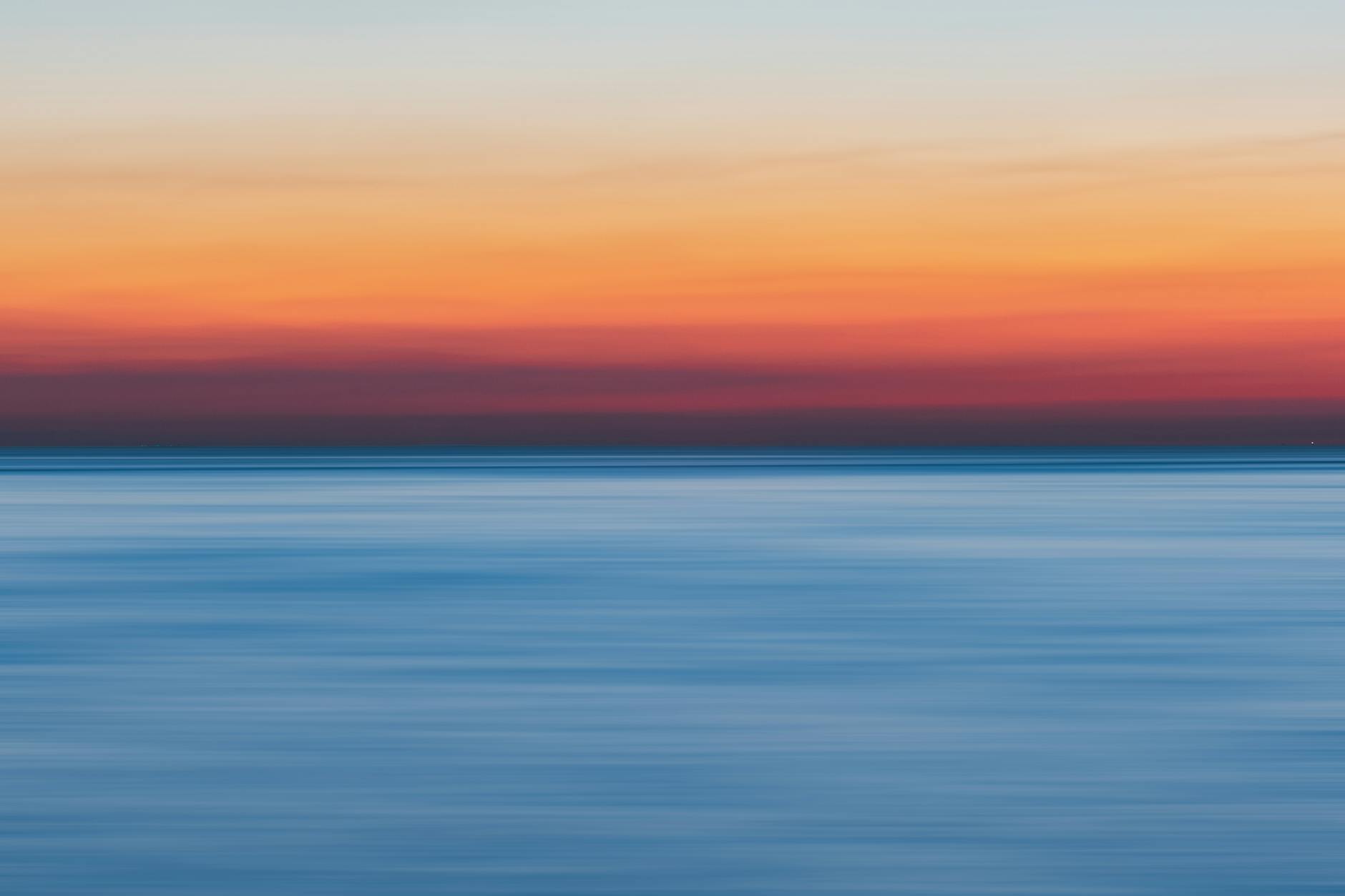 Calm Body Of Water During Golden Hour (Photo by Abdullah Ghatasheh)
Calm Body Of Water During Golden Hour (Photo by Abdullah Ghatasheh)
Additionally, the Amazonian region is known for its use of exotic fruits in cooking. From the tart and tangy camu camu to the creamy and sweet cocona, these fruits add a tropical twist to many dishes, including refreshing juices and decadent desserts.
Peru’s regional culinary specialties offer a tantalizing glimpse into the country’s diverse culinary heritage. From the coastal delights to the highlands’ hearty treasures and the exotic flavors of the Amazon, there’s something to satisfy every food lover’s palate. Embark on a gastronomic journey through Peru and indulge in these mouthwatering regional specialties that are bound to leave you craving for more!
Ceviche Image Source Lomo Saltado Image Source Juane Image Source
Unique Ingredients
Peru is a culinary paradise known for its rich and diverse flavors. The country’s cuisine is a delightful blend of indigenous ingredients and influences from various cultures, resulting in a unique gastronomic experience. In this section, we will explore three distinctive ingredients that contribute to the vibrant tapestry of Peruvian cuisine: Aji Amarillo, Quinoa, and Purple Corn.
Aji Amarillo
 Top view of bowl with wet yellow lemons placed on white textile on wooden table in bright room (Photo by Tara Winstead)
Top view of bowl with wet yellow lemons placed on white textile on wooden table in bright room (Photo by Tara Winstead)
Aji Amarillo is a vibrant yellow pepper that is a staple in Peruvian cuisine. Its fiery heat and fruity flavor make it a sought-after ingredient in many traditional dishes. This pepper is used extensively in ceviche, a popular Peruvian dish where raw fish is marinated in lime juice and mixed with onions, cilantro, and Aji Amarillo paste. The pepper is also used to make various sauces, such as the famous Aji Amarillo sauce, which adds a spicy kick to any dish.
Apart from its distinctive flavor, Aji Amarillo is also packed with health benefits. It is rich in vitamin C, antioxidants, and capsaicin, known for its anti-inflammatory properties. Incorporating Aji Amarillo into your cooking not only adds a spicy punch but also boosts your immune system and promotes overall well-being.
Quinoa
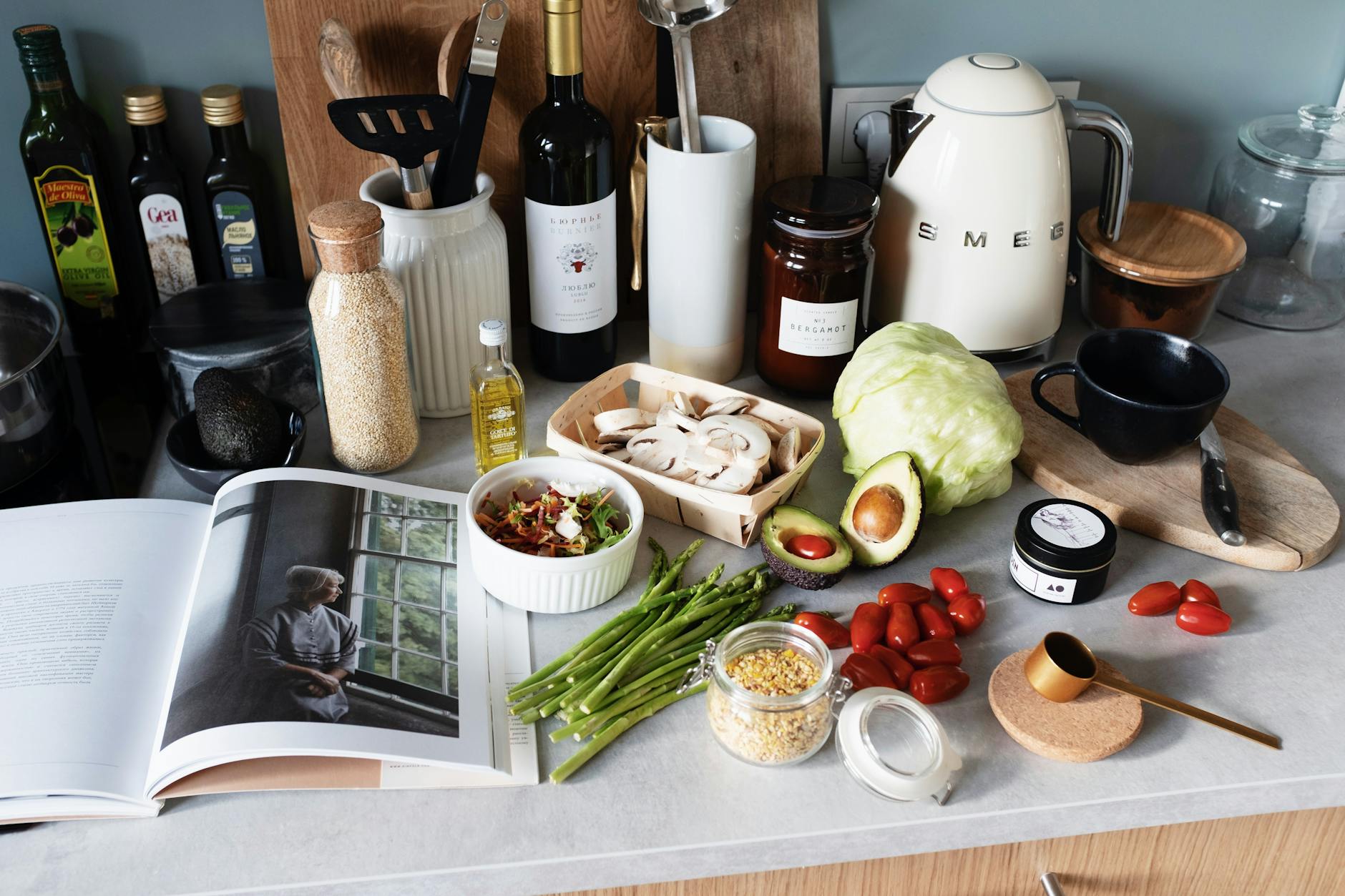 Various colorful healthy food and vegetables locating on countertop next to many different utensils and white kettle during cooking in stylish kitchen (Photo by ready made)
Various colorful healthy food and vegetables locating on countertop next to many different utensils and white kettle during cooking in stylish kitchen (Photo by ready made)
Quinoa, often called the “mother grain,” has been a staple food in the Andean region for thousands of years. This nutrient-dense grain is renowned for its high protein content and numerous health benefits. In recent years, quinoa has gained global popularity and is now recognized as a superfood.
Peru is one of the largest producers of quinoa, and it plays a crucial role in the country’s cuisine. From hearty stews to flavorful salads, quinoa is a versatile ingredient that adds a nutty taste and a delightful texture to dishes. It is often used as a substitute for rice or pasta and is a perfect choice for those following a gluten-free diet.
Beyond its exceptional nutritional value, quinoa is also an environmentally friendly crop. It requires less water and has a lower carbon footprint compared to other grains. By incorporating quinoa into your meals, you not only nourish your body but also support sustainable agricultural practices.
Purple Corn
 Purple Jellyfish (Photo by Scott Webb)
Purple Jellyfish (Photo by Scott Webb)
Purple corn, or maiz morado, is an extraordinary ingredient that adds a vibrant hue and unique flavor to Peruvian cuisine. This ancient Andean crop is not only visually appealing but also rich in antioxidants and anthocyanins, which give it its distinct purple color.
One of the most popular uses of purple corn is in the traditional Peruvian beverage called Chicha Morada. This refreshing drink is made by boiling purple corn with cinnamon, cloves, pineapple, and other fruits. The result is a deeply colored and flavorful beverage that is both delicious and nutritious.
Purple corn is also used in desserts, such as mazamorra morada, a sweet pudding-like dish made by combining purple corn juice with spices, dried fruits, and sweeteners. The vibrant purple hue and the subtle sweetness of purple corn make it a standout ingredient in many Peruvian delicacies.
In conclusion, Aji Amarillo, Quinoa, and Purple Corn are just a few examples of the unique ingredients that make Peruvian cuisine so special. These ingredients not only add distinct flavors and colors to dishes but also offer exceptional nutritional benefits. Exploring the culinary delights of Peru means immersing yourself in a world of diverse and tantalizing flavors.
Street Food
When it comes to exploring the culinary delights of Peru, street food is an absolute must-try for any food lover. The vibrant streets are filled with tantalizing aromas and mouthwatering flavors that will transport you on a culinary adventure. In this section, we will delve into three popular street food dishes in Peru: Causa Rellena, Churros, and Picarones.
Causa Rellena
 Assorted Sliced Fruits in White Ceramic Bowl (Photo by Jane Doan)
Assorted Sliced Fruits in White Ceramic Bowl (Photo by Jane Doan)
Causa Rellena is a beloved Peruvian street food dish that is both visually stunning and deliciously satisfying. It consists of layers of mashed yellow potatoes mixed with lime juice, yellow chili pepper, and oil, creating a smooth and creamy texture. The potato mixture is then filled with a variety of mouthwatering fillings such as chicken, tuna, or avocado. The dish is typically garnished with hard-boiled eggs, olives, and aji amarillo sauce, which adds a touch of vibrant color and flavor.
Causa Rellena is not only a treat for the taste buds but also a feast for the eyes. Its vibrant colors and artistic presentation make it a standout dish that is perfect for capturing Instagram-worthy photos. If you’re looking to experience a delightful burst of flavors and textures while immersing yourself in Peruvian street food culture, Causa Rellena is a definite must-try.
Churros
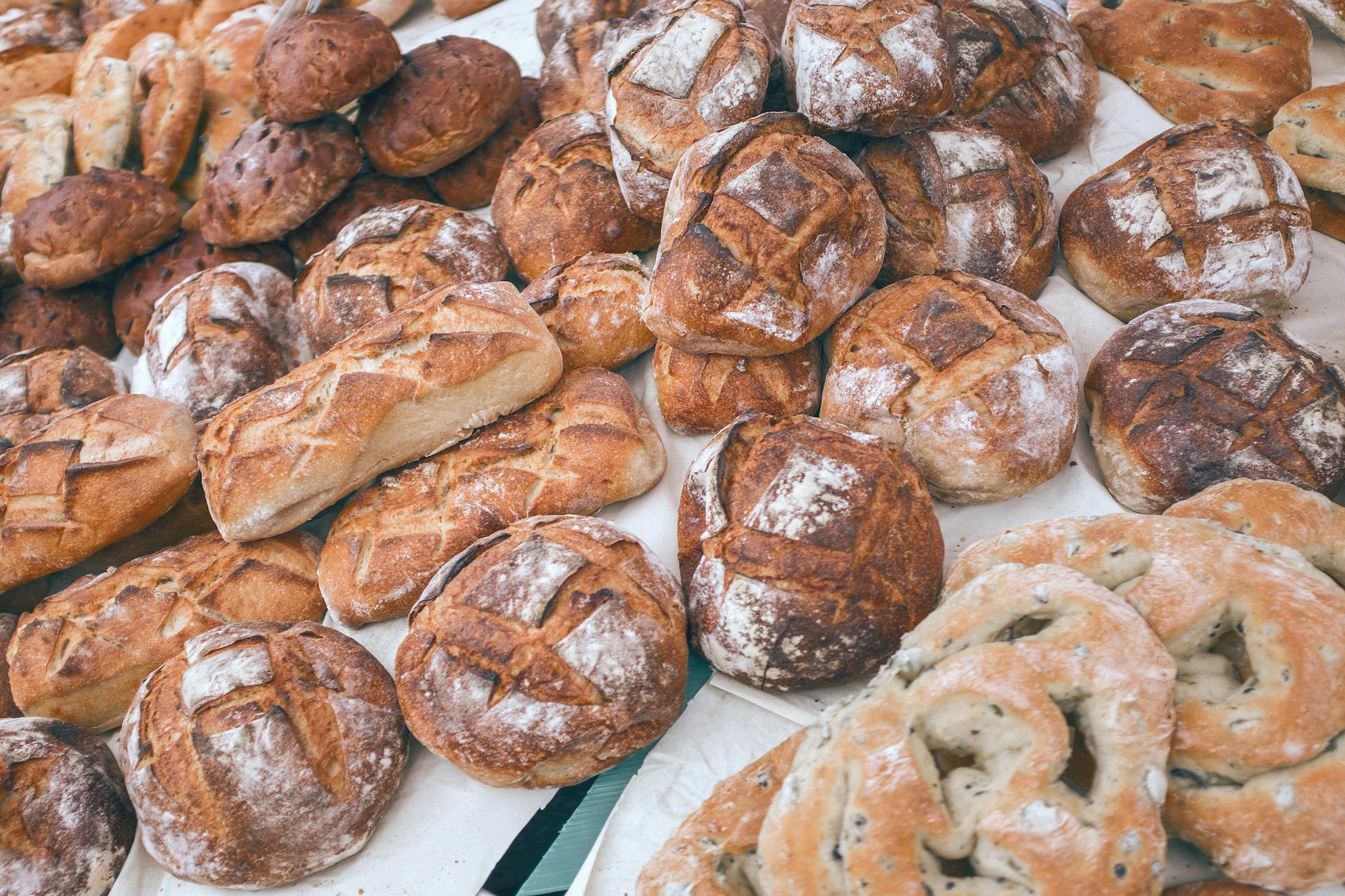 Collection of delicious baked goods in local bakery (Photo by Maria Orlova)
Collection of delicious baked goods in local bakery (Photo by Maria Orlova)
No street food adventure in Peru would be complete without indulging in a plate of warm and crispy churros. These delightful fried pastries are made from a simple dough mixture of flour, water, and salt. The dough is then piped into hot oil, resulting in golden and crispy churros that are subtly sweet and addictively delicious.
In Peru, churros are often served with a cup of thick, rich chocolate sauce for dipping. The combination of the crunchy churros and the velvety smooth chocolate creates a heavenly taste sensation that will leave you craving for more. Whether enjoyed as a breakfast treat or a late-night snack, churros are a beloved street food item that brings joy to locals and tourists alike.
Picarones
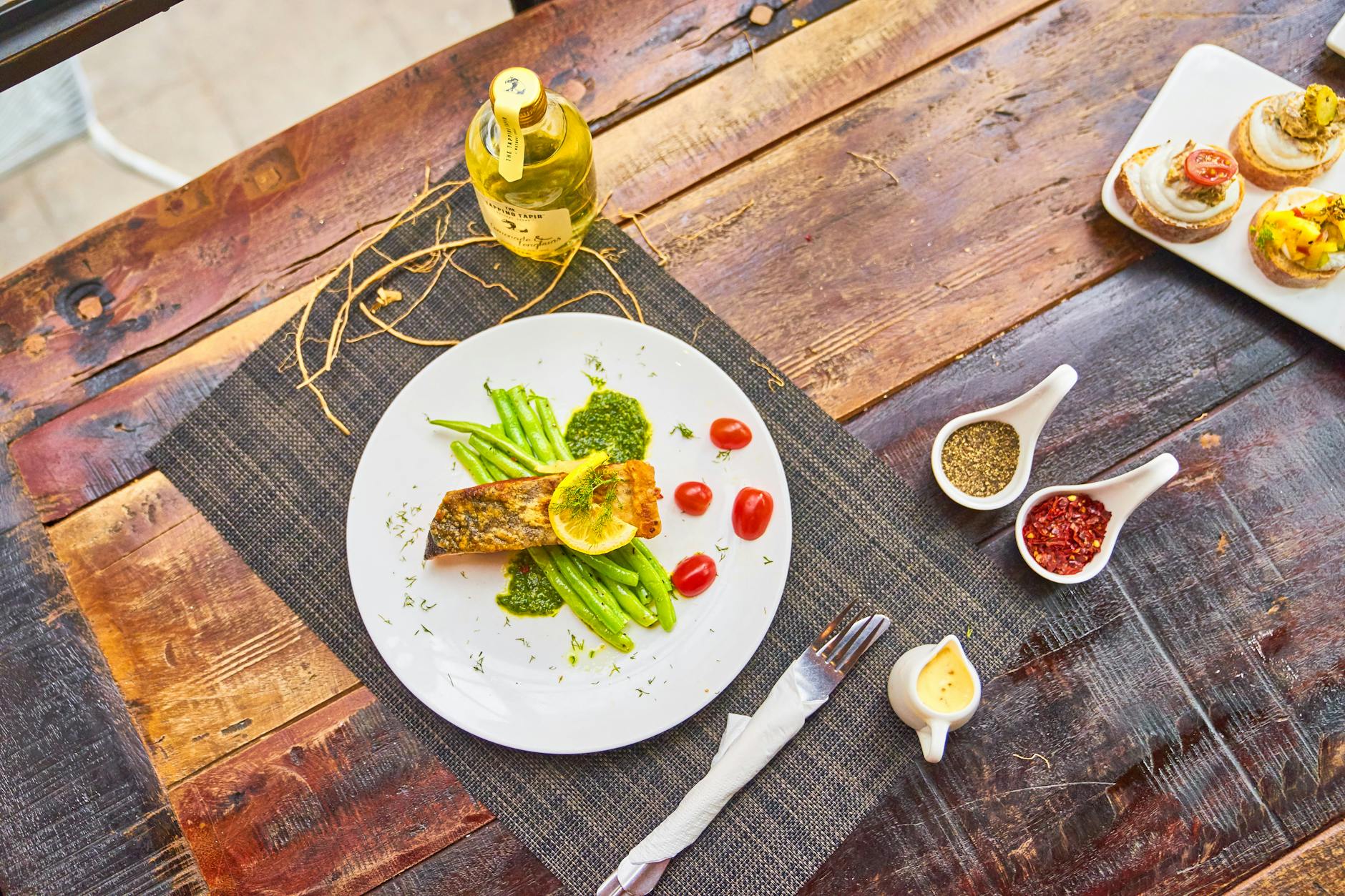 Grilled fish steaks served with vegetables and sauces (Photo by Loong Ken)
Grilled fish steaks served with vegetables and sauces (Photo by Loong Ken)
If you have a sweet tooth, then Picarones are the perfect street food indulgence for you. These traditional Peruvian donuts are made from a unique dough mixture consisting of pumpkin, sweet potato, flour, and yeast. The dough is carefully shaped into rings and then deep-fried to achieve a crispy exterior and a soft, pillowy interior.
Picarones are often served with a drizzle of sweet molasses syrup made from chancaca, a type of raw cane sugar. The combination of the aromatic syrup and the warm, fluffy donuts creates a heavenly combination of flavors that will leave you craving for more. Whether enjoyed as a dessert or a sweet snack, Picarones are a delightful treat that will satisfy your sugar cravings.
In conclusion, exploring the street food scene in Peru is an essential part of any food lover’s journey. From the visually stunning Causa Rellena to the crispy and sweet delights of Churros and Picarones, these street food dishes offer a taste of Peruvian culture and culinary excellence. So, lace up your walking shoes, hit the streets of Peru, and embark on a gastronomic adventure that will leave you with unforgettable memories and a satisfied palate.
To learn more about the history and cultural significance of Peruvian street food, visit Peru Delights.
Conclusion
In conclusion, exploring the culinary delights of Peru is an experience that no food lover should miss. From the vibrant street food markets to the upscale restaurants offering delectable Peruvian flavors, this South American country is a haven for gastronomy enthusiasts. The unique fusion of indigenous ingredients, Spanish influences, and international flavors creates a culinary landscape that is both diverse and exciting.
Peru’s national dish, ceviche, is a must-try for seafood lovers. The combination of fresh fish or shellfish marinated in citrus juices, spiced with aji peppers, and served with onions and cilantro is a burst of flavors that will tantalize your taste buds. And let’s not forget about the famous Peruvian pisco, a grape brandy that has become a symbol of national pride. Whether enjoyed neat or in a refreshing cocktail, pisco promises to add an extra kick to your culinary journey.
From the iconic dishes like lomo saltado and causa to lesser-known delicacies like anticuchos and rocoto relleno, every bite in Peru is a delightful adventure. The rich culinary traditions, ancient cooking techniques, and diverse regional specialties make this country a true food lover’s paradise.
So, pack your bags and get ready to embark on a culinary journey through the colorful streets of Lima, the coastal fishing villages, and the Andean highlands. Discover the bold flavors, vibrant colors, and warm hospitality that Peru has to offer. Your taste buds will thank you for it!







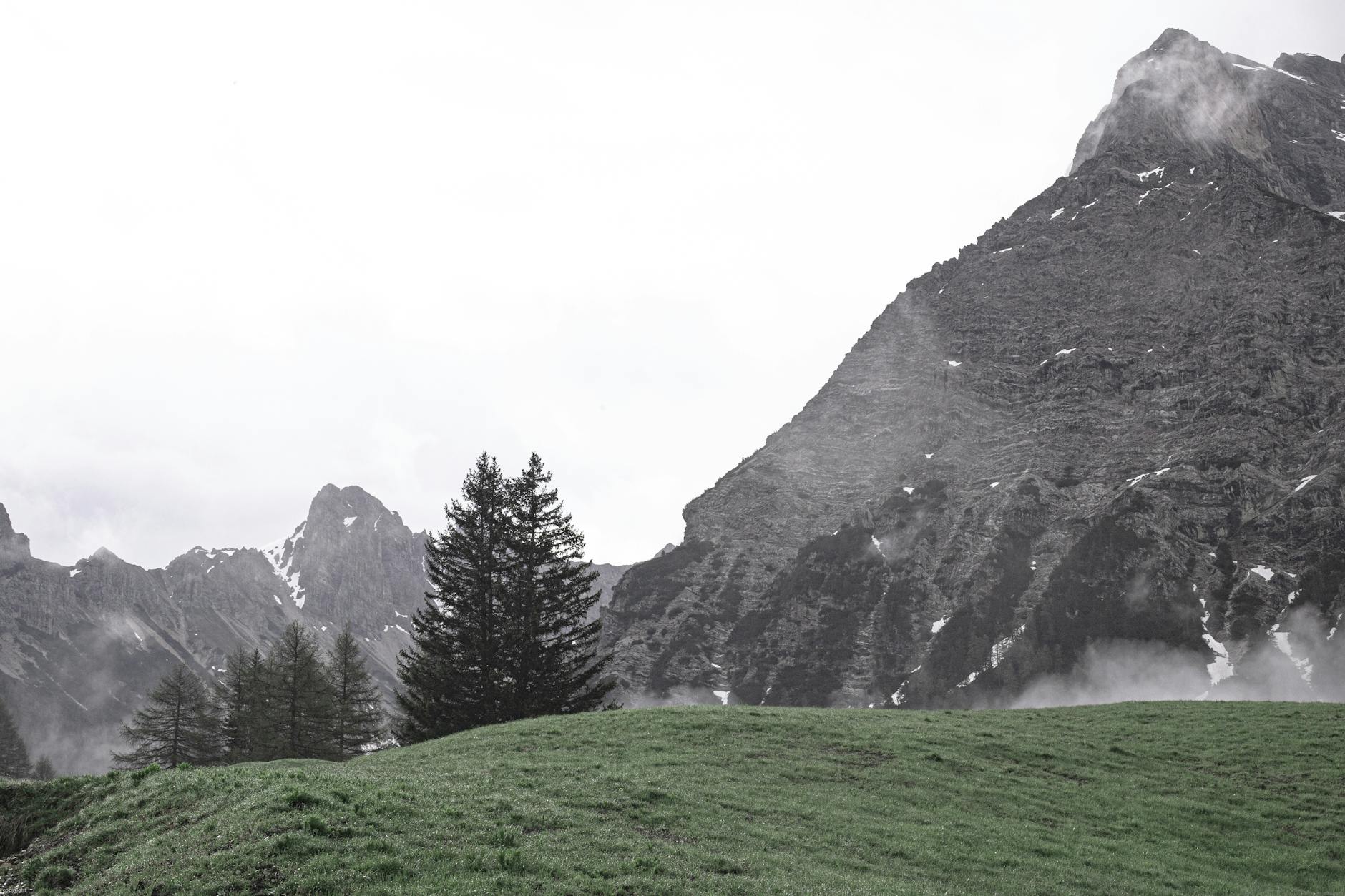 Green lush valley with coniferous trees located on bottom of rough misty mountain range (Photo by
Green lush valley with coniferous trees located on bottom of rough misty mountain range (Photo by 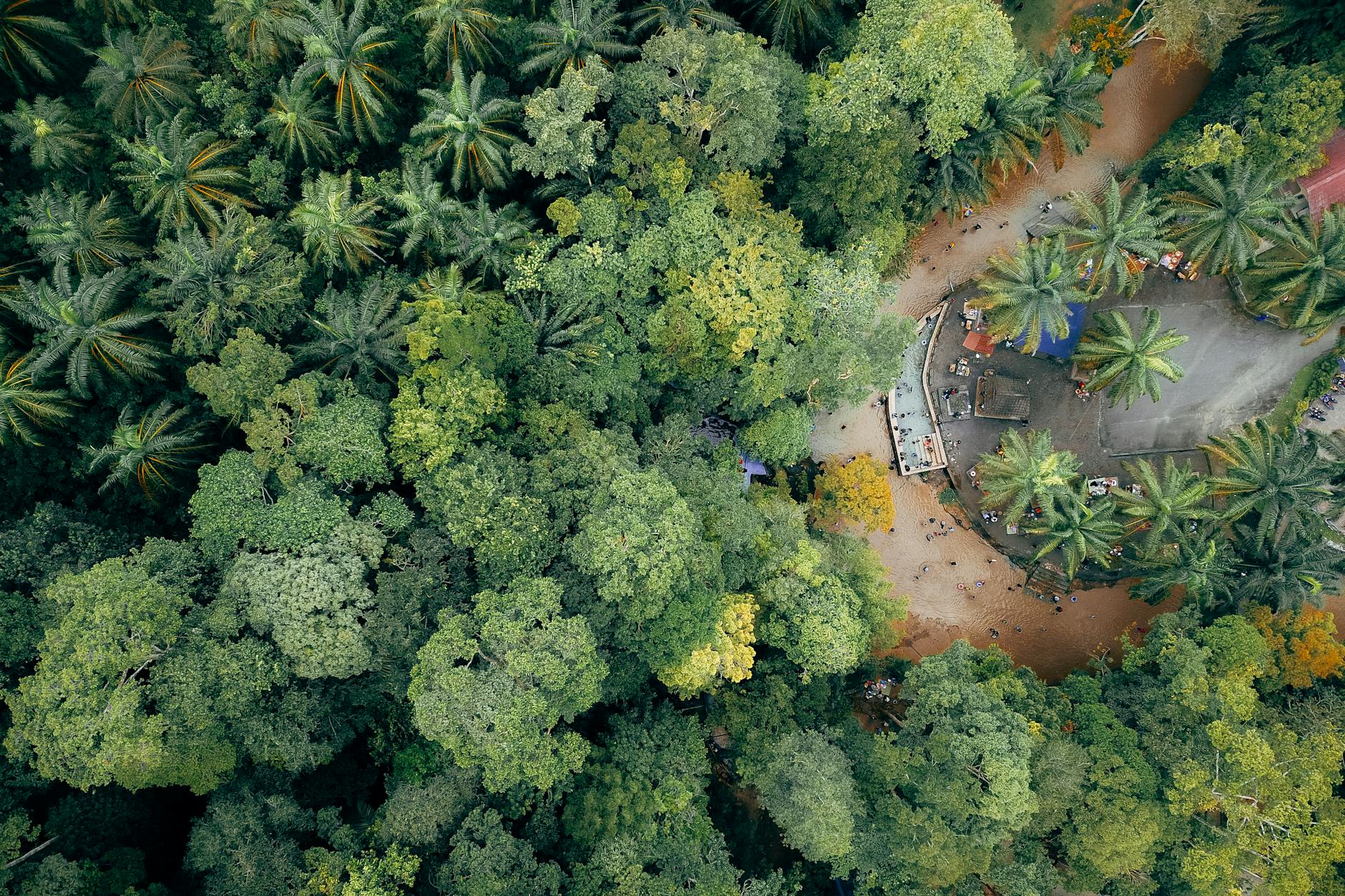 Lush tropical trees of forest growing along narrow path (Photo by
Lush tropical trees of forest growing along narrow path (Photo by 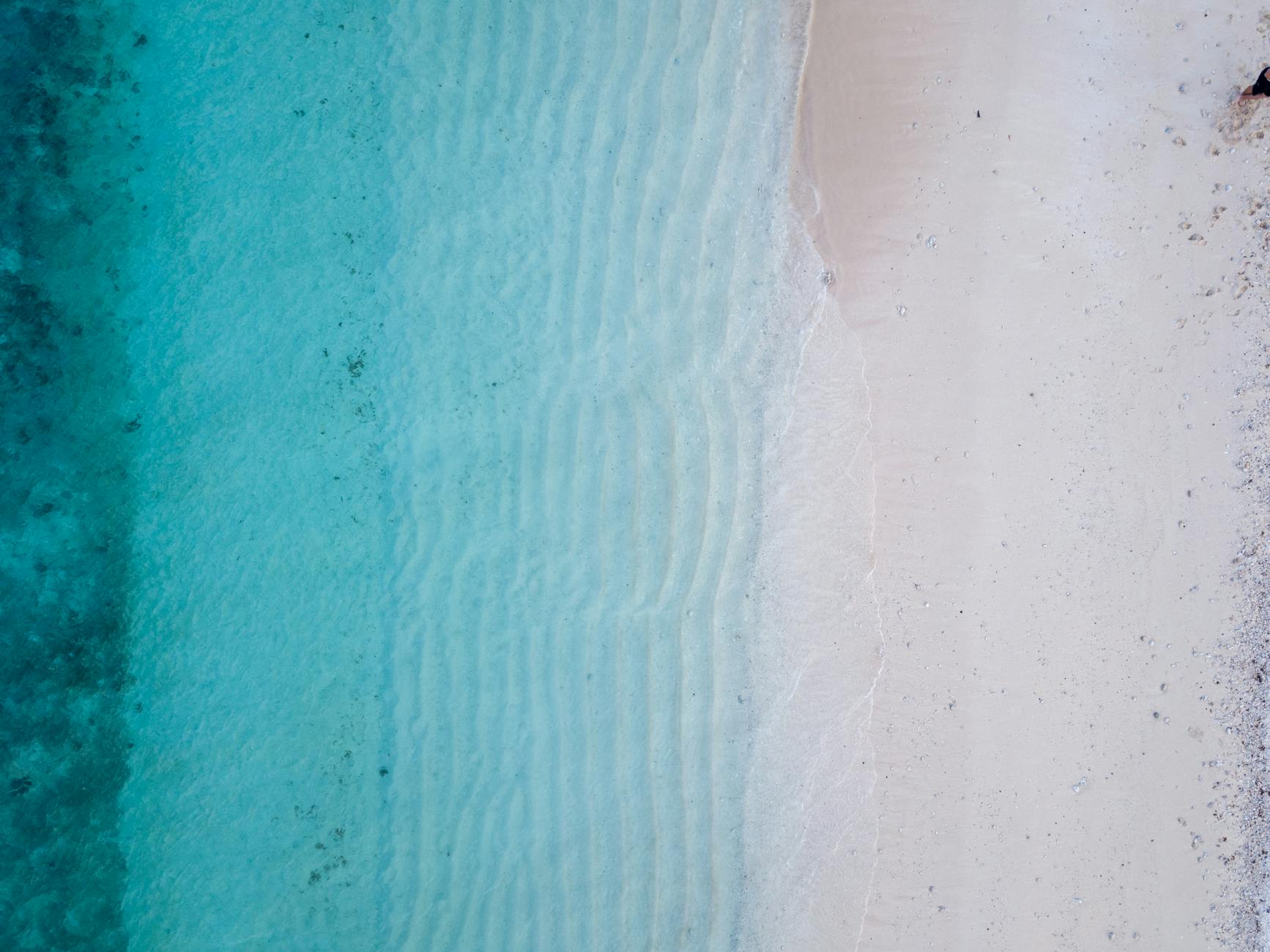 High Angle-photography of Seashore (Photo by
High Angle-photography of Seashore (Photo by 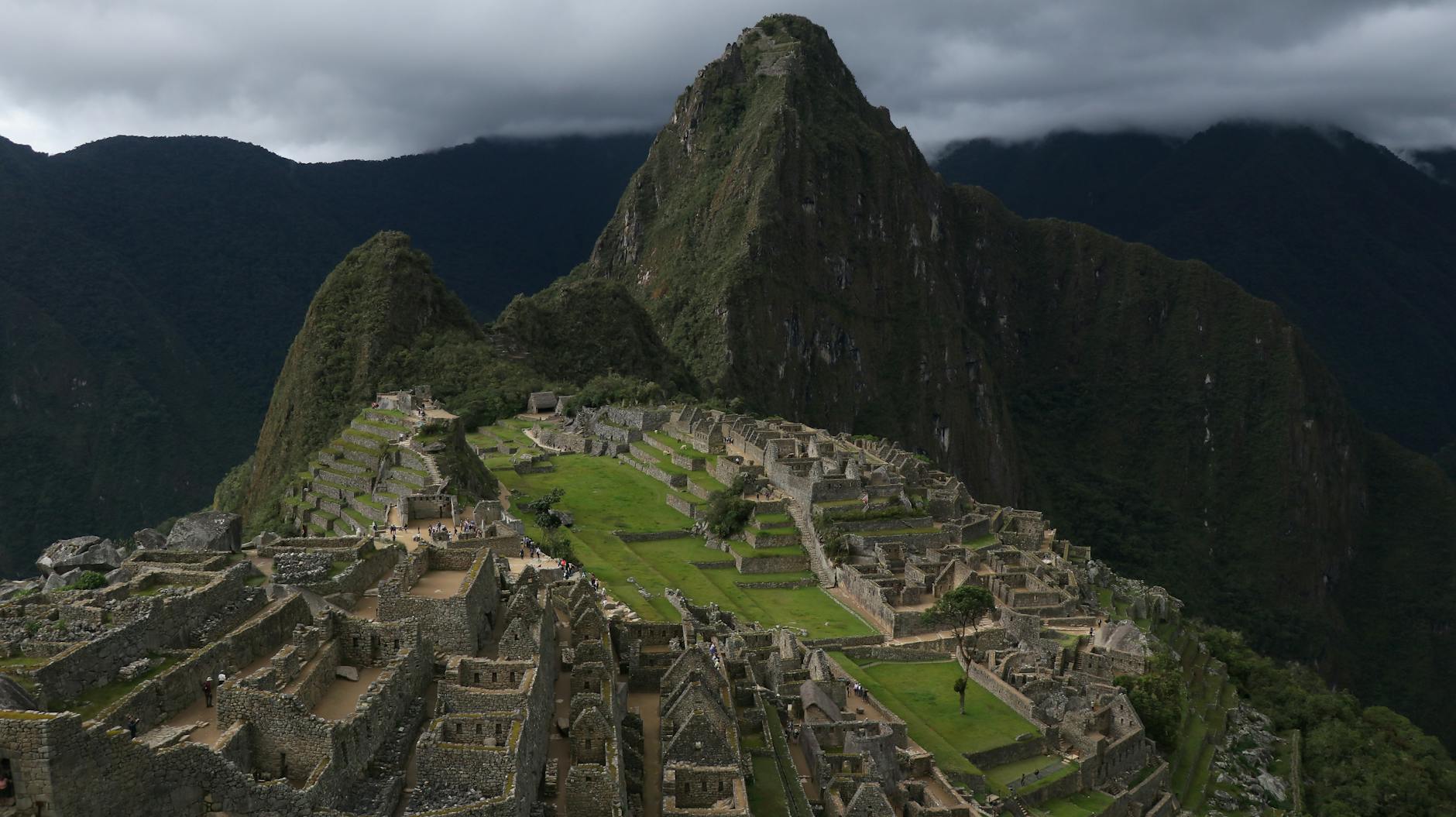 Drone Shot of Machu Picchu a (Photo by
Drone Shot of Machu Picchu a (Photo by 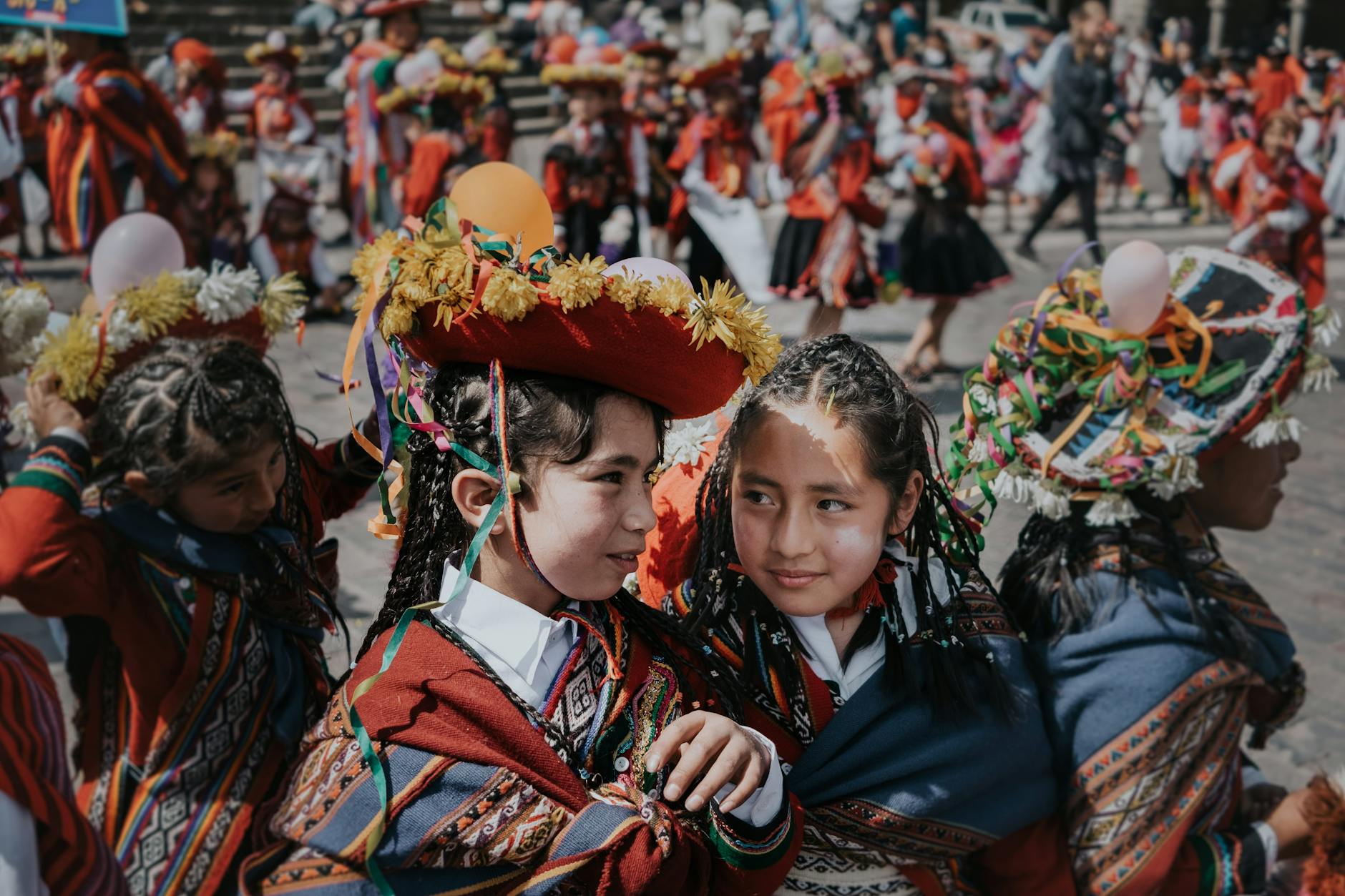 Girls in Assorted-color Apparels (Photo by
Girls in Assorted-color Apparels (Photo by 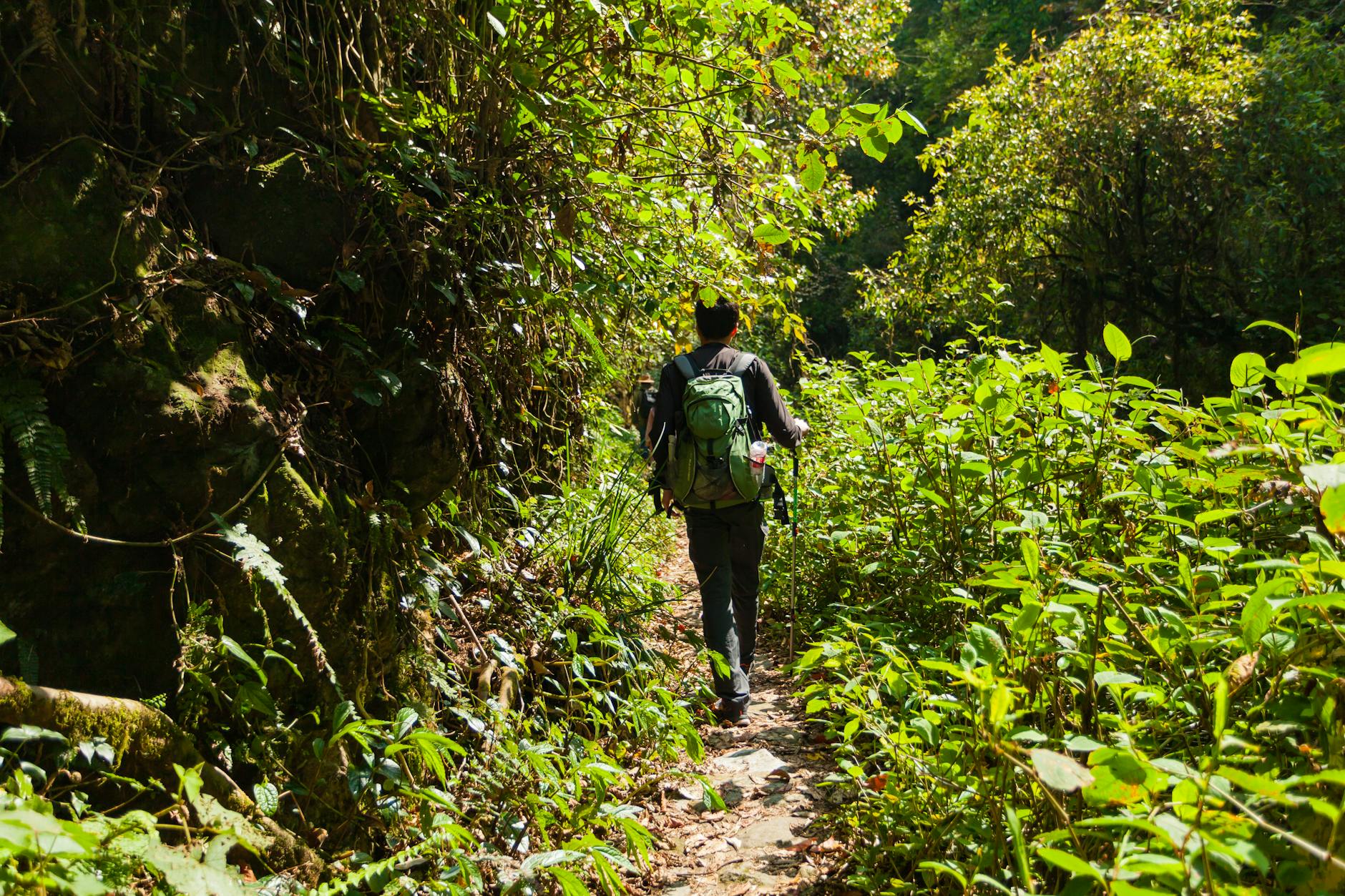 Person Carrying Green Backpack in Forest (Photo by
Person Carrying Green Backpack in Forest (Photo by  Black and white of embankment with calm sea and Hagia Sophia grand mosque on background located in Istanbul in Turkey (Photo by
Black and white of embankment with calm sea and Hagia Sophia grand mosque on background located in Istanbul in Turkey (Photo by 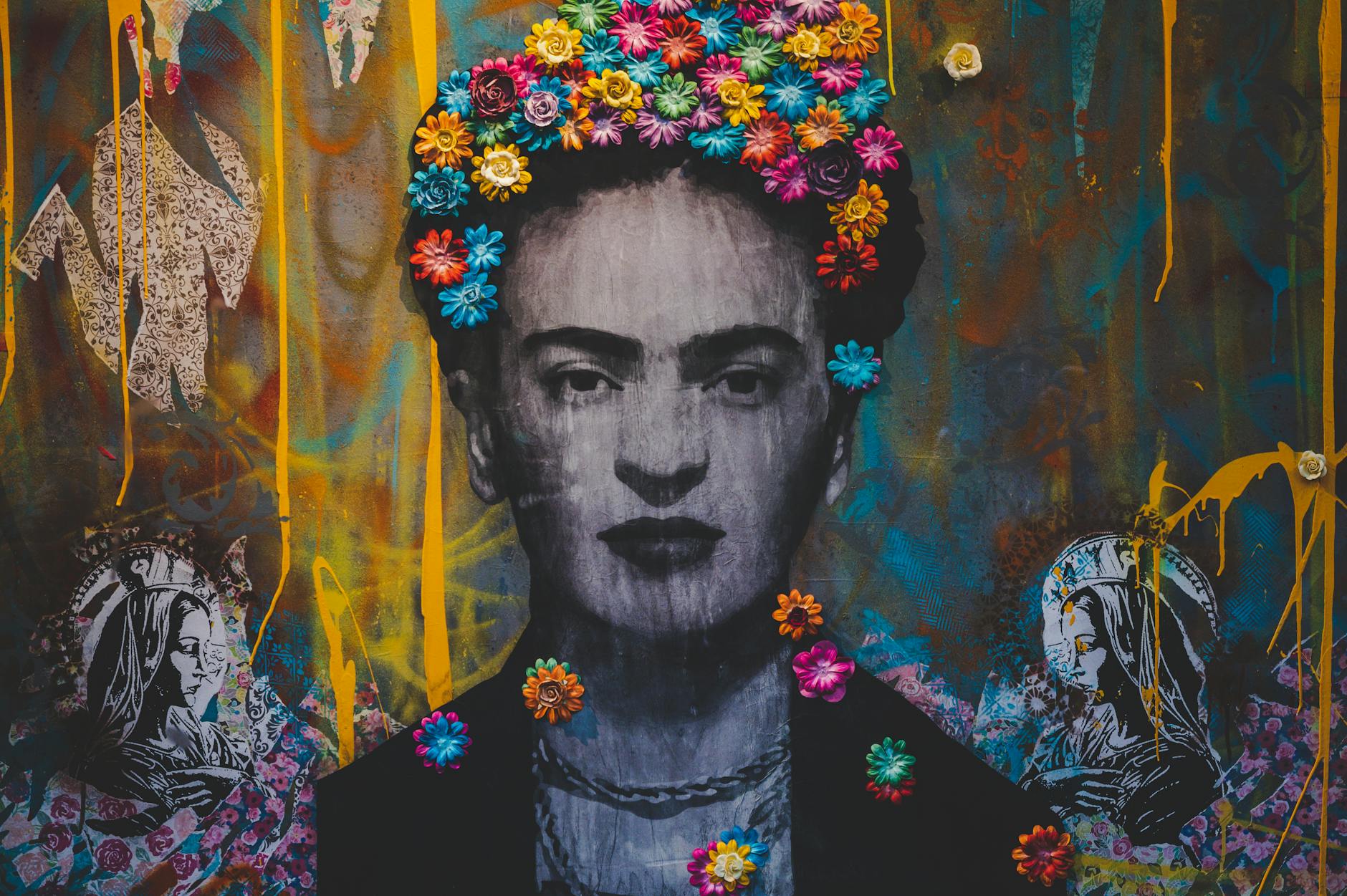 Creative artwork with Frida Kahlo painting decorated with colorful floral headband on graffiti wall (Photo by
Creative artwork with Frida Kahlo painting decorated with colorful floral headband on graffiti wall (Photo by 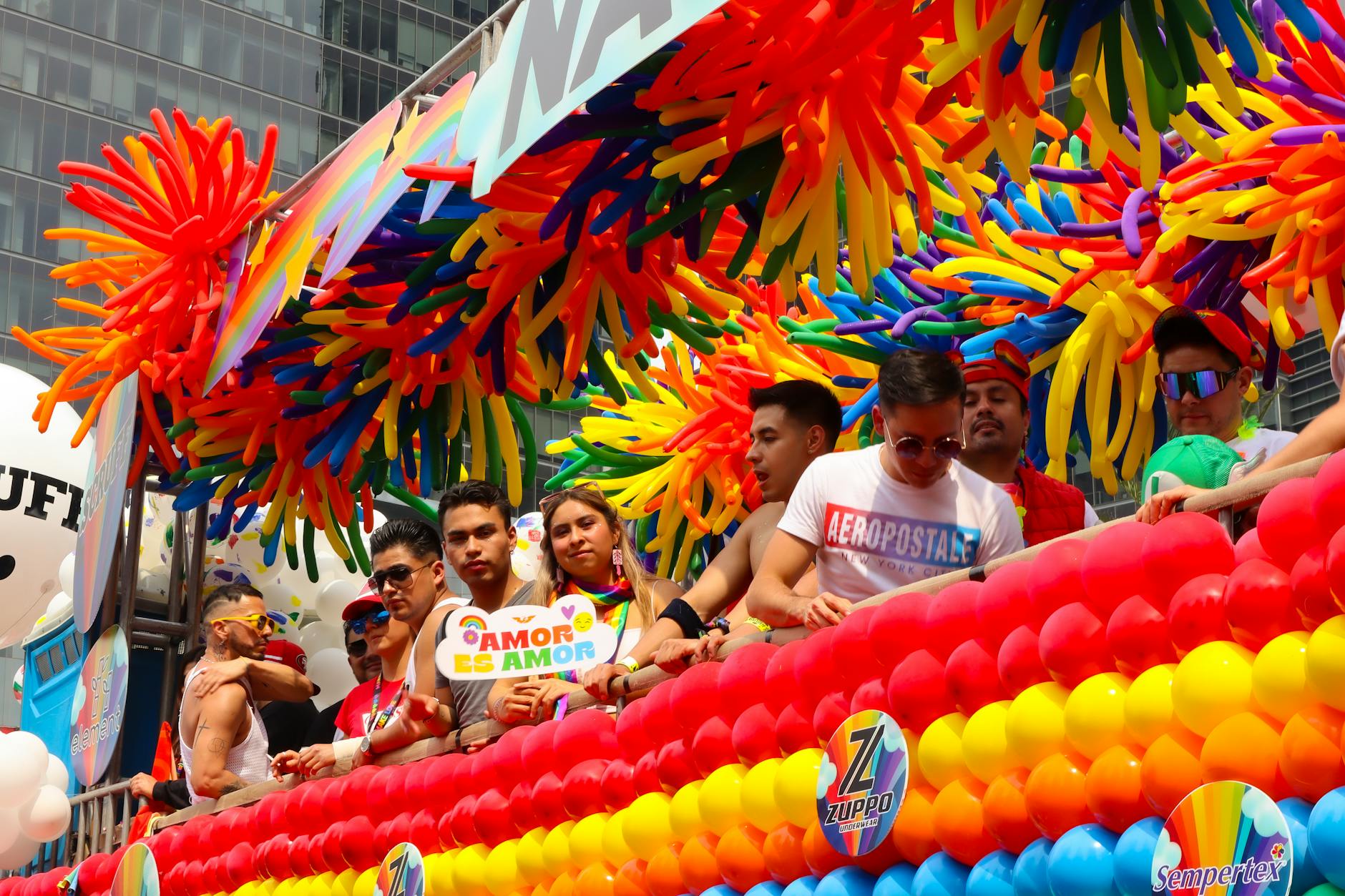 People Riding on a Colorful Float (Photo by
People Riding on a Colorful Float (Photo by 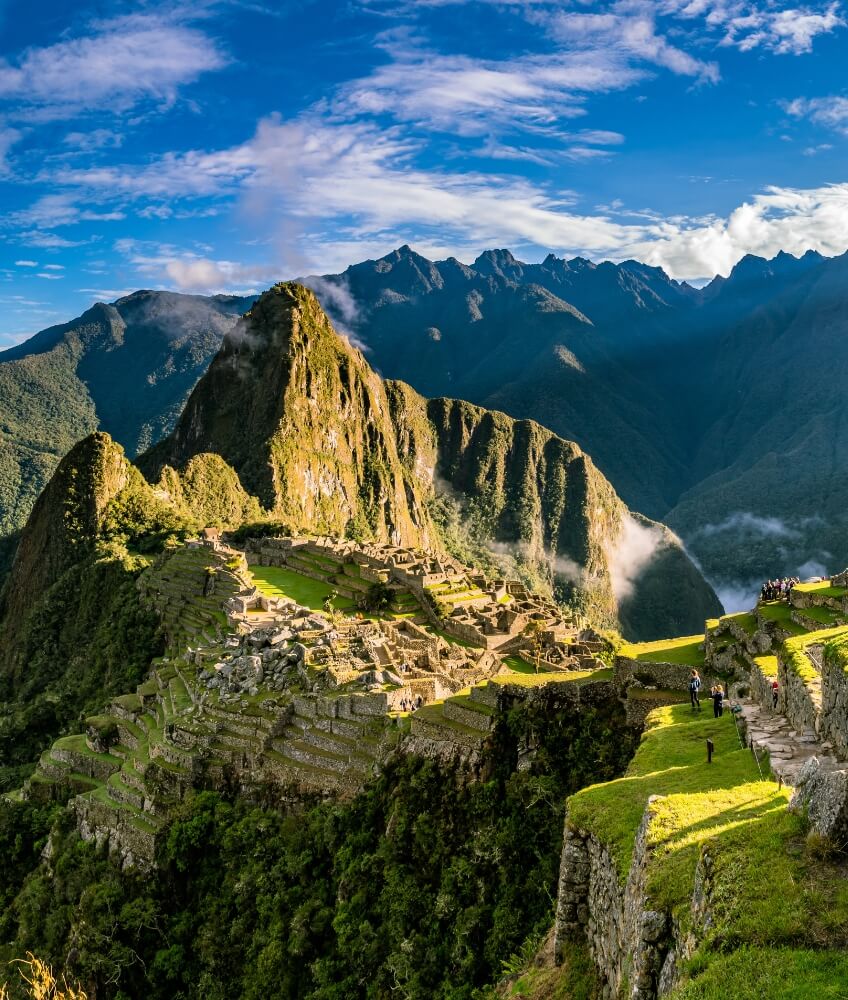
 Aerial view settlements on grassy peaceful valley surrounded with green hills and calm river on sunny day (Photo by
Aerial view settlements on grassy peaceful valley surrounded with green hills and calm river on sunny day (Photo by  Christ the Redeemer (Photo by
Christ the Redeemer (Photo by 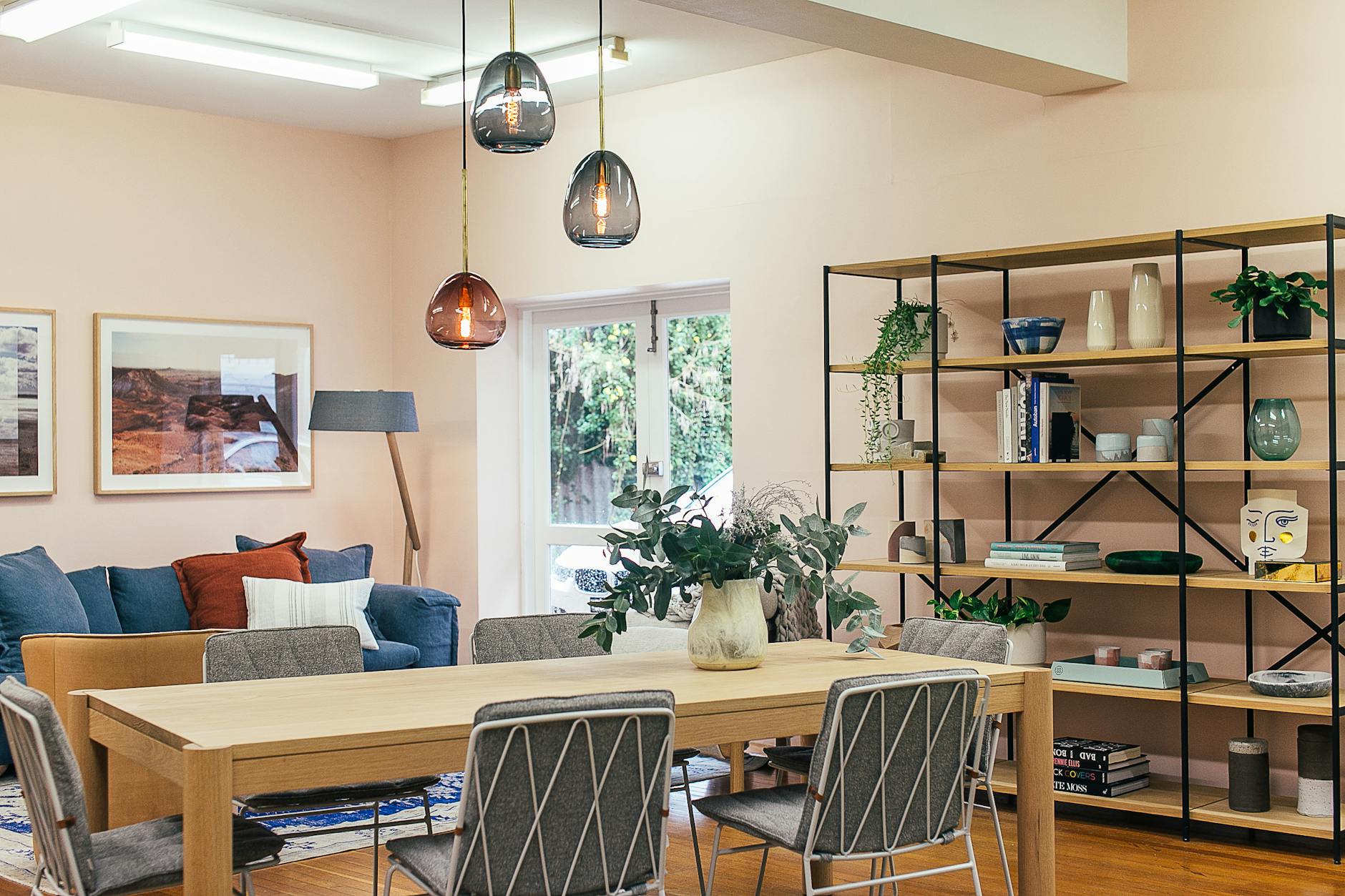 Interior of modern living room (Photo by
Interior of modern living room (Photo by  The ruins of a roman temple in the mountains (Photo by
The ruins of a roman temple in the mountains (Photo by  Green tropical island with palms near sea (Photo by
Green tropical island with palms near sea (Photo by 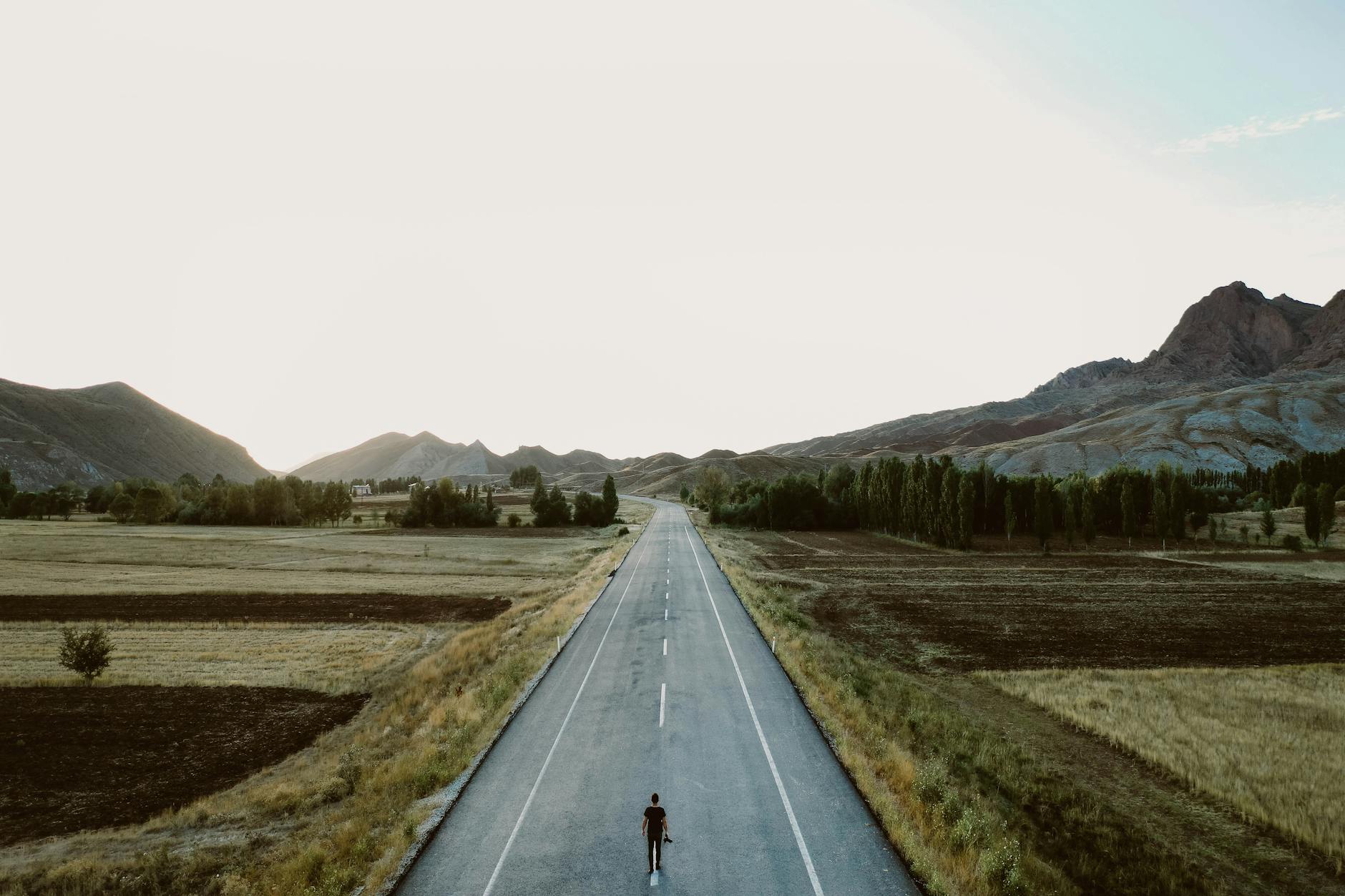 A Person Standing Alone on Country Road (Photo by
A Person Standing Alone on Country Road (Photo by